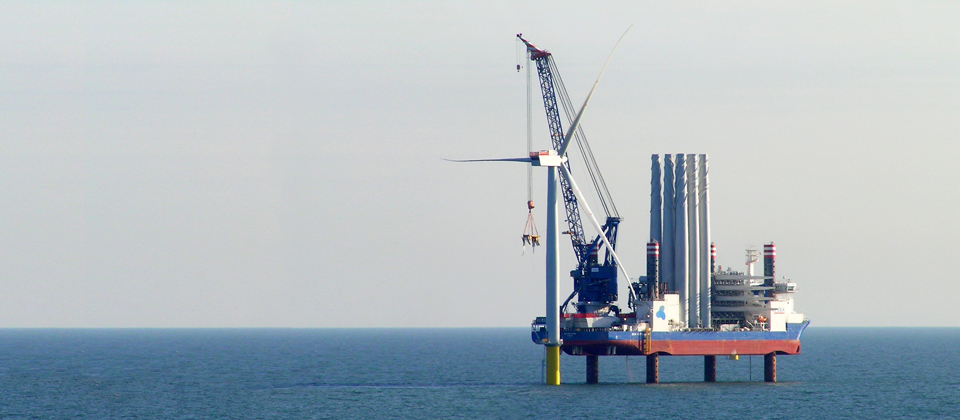
By Søren Grøn, Project Manager, A2SEA
SEA INSTALLER shows what she can really do
At West of Duddon Sands, SEA INSTALLER started out with monopiles and transition pieces. Now she has demonstrated what she was originally designed to do: transport no fewer than eight 3.6 MW topsides at a time for installation far from shore.
Keeping promises
Delivered to A2SEA last autumn, and arriving in Europe shortly before Christmas 2012, SEA INSTALLER has always promised to do things no one else has ever done before.
For the first months of her working life, the new vessel was kept busy with projects that were less challenging cargo-wise, giving the crew a chance to really get to know her. Now however, SEA INSTALLER has had her first chance to show what she was always designed to do.
This remarkable vessel resulted from a joint specification created by A2SEA, DONG Energy and Siemens Wind Power. The specification would enable SEA INSTALLER to carry up to eight 3.6 MW Siemens topsides (nacelle, tower and blades) at a time. West of Duddon Sands, situated far from the loading port at Belfast, would be the first installation project to use this revolutionary capability. At the time of writing, the project is well underway – and SEA INSTALLER has proven that she can deliver every bit of her creators’ bold vision.
Full house
Eight towers, 8 nacelles and 24 blades, all at once, is quite a load for an offshore wind installation vessel. And there still needs to be room on deck for other items such as bulky tool containers (not to mention room for personnel and components to maneuver, too). When everything is in place, every square metre of deck is fully utilized and SEA INSTALLER has become a heavily loaded, fully optimized second-generation vessel.
The benefits of transporting that much cargo at once are clear. With 100 nautical miles or so from Belfast harbour to the installation site just off Walney Island on the west coast of the UK, travel distance is a serious time and cost parameter. Under normal conditions, it takes 12 hours to sail each way. And you don’t need to be Einstein to work out that carrying eight topsides compared to just two or three with a first-generation, slower-moving vessel presents substantial savings as well as lower environmental impact. In fact, installing 108 turbines at West of Duddon Sands takes just 14 trips, minimising the number of port calls and accompanying jack-up operations.
Fast load outs
The first arrival of eight topsides at the installation location took place on 26 September, following a very quick first load out performed in just 2.5 days. Because this was the very first time, extra diligence was required and subsequent load outs have slashed this to under two days. Speed like this can only be achieved via simultaneous loading operations performed both with the vessel’s main crane and with onshore cranes.
Prepared for success
Of course, at the end of the day, if you’re going out to a wind farm to put up turbines, each with a tower, a nacelle and three blades, it doesn’t matter if you are carrying one topside or eight. But there’s plenty of preparation that needs to take place first. For example, you need to design all the sea fastenings and other equipment for holding components in the most space-saving and workflow-friendly way.
If it’s not too windy, operations can be carried out with little attention to the fact that there are more components on board. From a safety perspective, you still need to lift in exactly the same way, so crew don’t need to radically change the way they work or perform operations they’re not used to performing. In more marginal conditions, the work can be a little more challenging, and safety procedures may be tightened even further. And that’s where the professionalism and experience of SEA INSTALLER’s crew and that of the Siemens Wind Power team combine to make all the difference.
Like this post? Subscribe now and get notified about new content!
